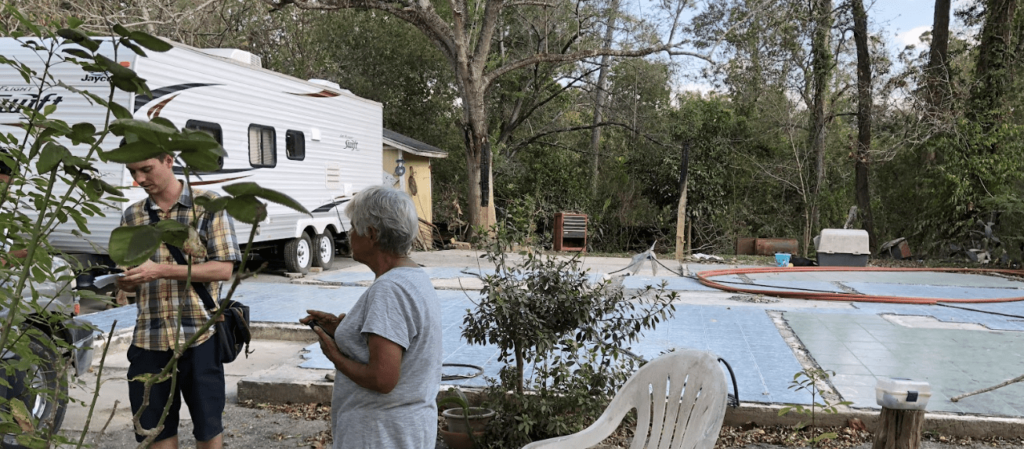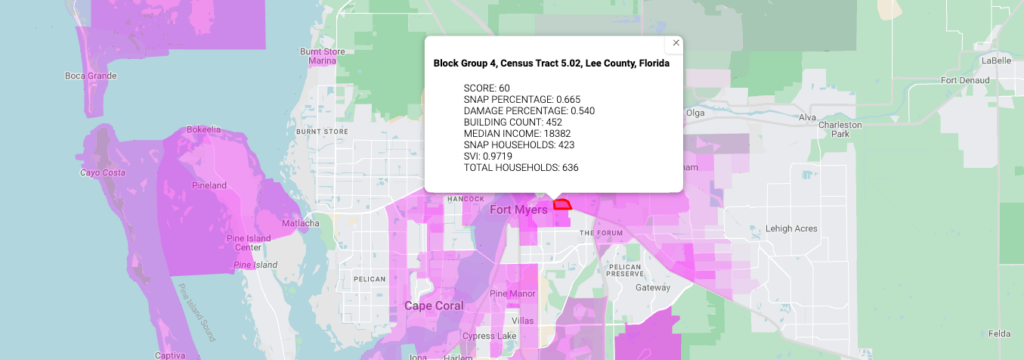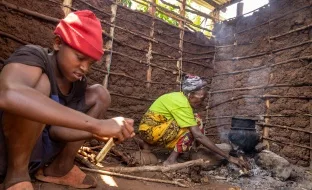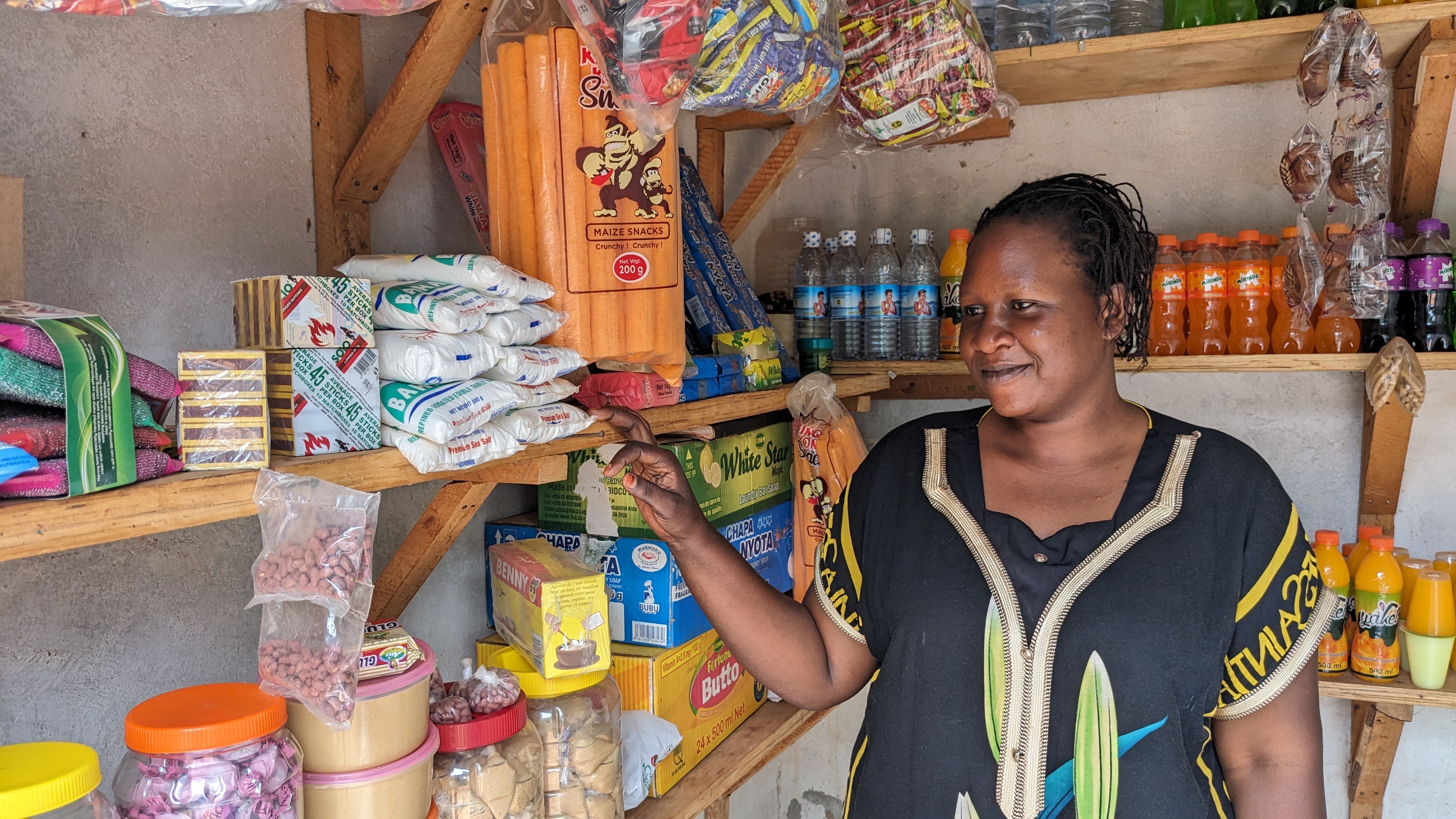For nearly two weeks after Hurricane Ian hit Ft. Myers, Florida, Shannon P. went without power. Shannon relies on food stamps to make ends meet and is dependent on insulin, which must be refrigerated. To power her fridge, she had to purchase a generator and a constant supply of gas to run it, costing hundreds of dollars a week. These bills added to her worries about how she would afford repairing the caved-in roof and flood damage to her home, which she shares with her husband, three children, and mother. Her application for assistance from FEMA was rejected.
When natural disasters hit, the economic impact is immediate for people already living in poverty: wages are interrupted, homes and cars are damaged, spoiled food is thrown out. The sooner affected families receive cash, the sooner they can begin to put their lives back together. They will also be less likely to have to resort to harmful coping strategies like predatory loans or credit card debt.
So when back-to-back hurricanes hit the U.S. last fall, first in Puerto Rico and then in Florida, GiveDirectly tried something new: we launched a fully remote hurricane response, delivering over $3.3M to 4,748 impacted low-income households in only a matter of weeks.
Previously, it took us 6x as long to deliver cash in disaster areas
The first time GiveDirectly responded to a natural disaster in the U.S. was in 2017, to Hurricane Harvey in Texas and then Hurricane Maria in Puerto Rico. To find and pay those 6,363 recipients took us 7 months. After distributing physical debit cards at rolling in-person enrollment events, we would load the cards with funds within 1-2 weeks. We were pleased with these pilots – we successfully distributed $9.5M to low income households to aid in their recovery – but we also knew that it wasn’t fast enough.

Now we use aerial imagery to identify those most in need
To quickly identify who is most in need of support, GiveDirectly created the Delphi tool with help from Google.org Fellows, which maps the intersection of poverty and disaster-related damage at the census block group level.
AI helps analyze fly-over imagery to measure damage
We compared aerial photographs captured by the National Oceanic and Atmospheric Administration (NOAA) before and after the hurricane with Google’s SKAI model, damage prediction technology co-developed with the UN World Food Program. After labeling a sample of around 500 buildings as damaged or not damaged based on visible cues like stripped roof shingles and debris, the SKAI team ran an algorithm to predict household-level damage across the hundreds of thousands of structures in the images.
We weigh damage, poverty rate, and population to select most needy areas
We then overlaid this damage data with government poverty data (like median income and food stamp usage) to identify areas that were both high-poverty and high-damage. What would have taken us weeks of in-person block-by-block assessments of homes we now completed in a few hours.

Recipients enroll remotely and are paid in a day through a benefits app
To then reach low-income households in these areas, we partnered with Propel, maker of the food-stamp benefits app Providers used by 5M Americans (about a quarter of all food stamp recipients). We invited users in eligible geographic areas to enroll through an alert in the app, which took them just three minutes on average. Because we’d pre-determined their financial and recovery needs, they weren’t burdened with submitting any additional proof of eligibility. For comparison, our previous enrollment process took around 25 minutes.
Given the prevalence of online scams, a key challenge we face reaching U.S. recipients remotely is overcoming worries about fraud. Working through a trusted platform was critical for us to build trust. One Florida recipient recounted, “I thought it must be for real, since it was on the app. If I’d seen it somewhere else, I don’t know, I might not have trusted it or thought it was a scam. But I didn’t think that because it was in the app.”

$700 went straight to their bank accounts in less than a day
Propel also offers users a free mobile banking account, which we used to deliver their funds within 48 hours of enrollment, though more than 90% received payment in less than 24 hours. Recipients could then make online or in-person purchases, move the money to other accounts or transfer it to apps like Venmo or CashApp.
“I was shocked. I really was. Cause when you apply for things, they want your credit score, they want this, they want that, but this thing…It just showed up in my bank account, and I’m like, oh my God… I cried. I really cried when that money came in. Because I had nothing – I had my dog and the clothes on my back.”
Deborah S., Ft. Myers, FL
This remote approach let us distribute $700 payments to 1,115 families in just the first 36 hours of our Florida campaign. We could also work over large geographies – running simultaneous campaigns in 32 Puerto Rican municipalities and later in 386 Florida census block groups without needing teams on the ground.
This approach is meant to be supplemental to other aid and inspire innovation
There are limitations to this approach. Some of the most vulnerable disaster survivors were left out of our response. This includes undocumented individuals, who are ineligible for most government benefits and thus are not users of the app, and those without smartphones or who face other technological barriers.
Because of this, we see our remote program as a supplement to other models, not as a replacement. For future disaster responses, we’re exploring a layered approach: we’ll get cash into the wallets of Providers users as quickly as possible while running complementary targeting and enrollment options (e.g., open web-based applications, in-person operations, and collaborations with local partners) to provide relief to those who would otherwise be left out.
Applied to other disasters, it can revolutionize how we deliver aid
Through use of this powerful combination of technologies – A.I. damage predictions and remote targeting, enrollment, and payment – we can respond in days to all types of U.S. disasters, including forest fires, tornadoes, earthquakes, and urban flooding. And we’re not limited to natural disasters. Access to low-income households through a remote platform means we can also immediately deliver cash in the wake of unexpected financial emergencies, for example, or to those at risk of eviction.
We will never be as big as FEMA, and that isn’t our goal. Through demonstrations like these, we can show a way forward that’s quicker, more targeted, and better for recipients. Because in moments of crisis, disaster responders owe it to survivors like Shannon and Deborah to make emergency relief accessible and fast.
Learn more about the program from Wired, Fast Company, NowThis, & FoxWeather.

